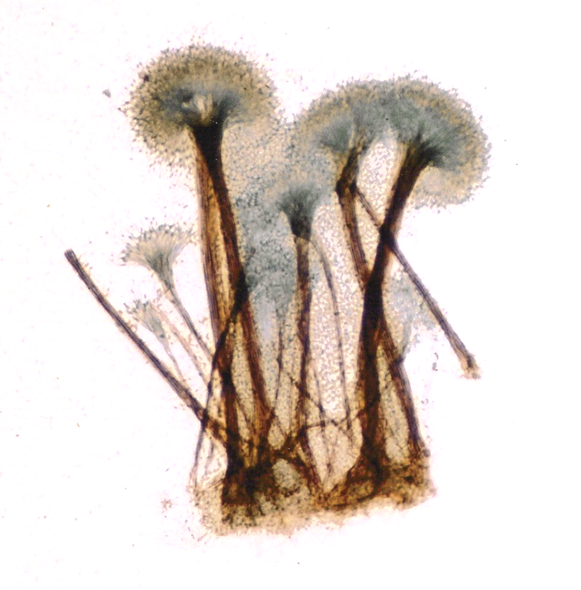
Locust metarhizium
CABI scientists have penned an important paper published in the journal Biocontrol Science and Technology which pulls no punches when it boldly states ‘the future of humankind and the rest of Earth’s biodiversity depend upon our research efforts generating solutions to the global challenges.’
Now this stark realisation has grabbed your attention, what does the body of work entitled ‘Biological control and the Nagoya Protocol on access and benefit sharing – a case of effective due diligence’ actually mean for the future of CABI’s endeavours in agricultural science and its mission to help farmers lose less of their crops to a range of pests and diseases and develop solutions to increase yields and feed more?
A close analysis of the paper, written by Dr David Smith, Dr Hariet Hinz, Dr Joseph Mulema, Dr Philip Weyl and Dr Matthew Ryan, indeed presents the reader with a logical ‘case of effective due diligence’ when applied to the Nagoya Protocol which was ratified in October 2014 to ‘guarantee the fair and equitable sharing of benefits arising from the utilisation of genetic resources.’
But perhaps the most interesting question raised is how to overcome the challenges posed by the protocol, which CABI is working to map and surmount through the publication of its Access and Benefit Sharing (ABS) policy and construction of a network of CABI ABS ‘Champions’ who are tasked with liaising with host countries so it can carry out its work in compliance with local needs.
As Smith et al explain, ‘The Protocol is impacting on research, requiring the researcher to seek permission to access genetic resources in advance of collection principally at the project planning stage. They must negotiate mutually agreed terms determining what and what cannot be done with the genetic resource and detail the benefits that will be shared arising from the intended use.
‘However, many signatories to the Protocol are only just putting in place specific measures to implement the Nagoya Protocol. Information is often difficult to access and not always available on the ABS Clearing House (ABSCH), making it necessary to contact the appropriate National Focal Point (NFP) or a Competent National Authority (CNA).
‘Indeed on occasion scientists have obtained clearance for use of a genetic resource only to find they were dealing with a government department not authorised to provide relevant permissions.’

A locust swarm
So what is the solution to this particular hurdle? The authors believe centralised help could be offered.
‘Researchers who wish to access a country’s genetic resource are asking the same questions of the national authorities regarding the processes for compliant access which are frequently not transparent and easily accessible,’ they claim. ‘You can find answers to frequently asked questions on the Protocol in order to get an understanding of terminology and a general understanding but not necessarily referring to the details of the process for each country and what an individual needs to do to be compliant.’
Smith et al argue that ‘often the details are hidden away in ‘implementing acts’ and in languages that are not always understood or correctly interpreted.’ They state that researchers, or indeed research organisations, gather such information through experience.
They go on to state, ‘It is critical that this knowledge is shared, to reduce the amount of time and money that are invested in discovering the process and the negotiation required.’
With all this in mind, it would seem that the remedies for any flaws in the Nagoya Protocol as highlighted by Smith et al are clear but the authors throw another ‘spanner in the works’ of the issue by raising the ‘small’ matter of whether access to Digital Sequence Information (DSI) should be treated in the same way as accessing the genetic resource or material (organism) itself.
Another potential ‘stumbling block’ in this regard is that ‘generating and publishing sequence data is considered by many to be descriptive information and therefore not ‘utilisation’ which would accordingly mean that it is out of regulatory scope.’

Graphium
Nevertheless, the authors believe that ‘DSI needs to be freely shared in the public domain to help address the taxonomic impediment that the Convention on Biological Diversity (CBD) recognises and to meet the needs of agriculture and science.’
So where does this leave us with regard to living on a planet threatened by climate change and other challenges to its biodiversity, food security and other related issues?
From the author’s viewpoint the answer rests in embracing the Nagoya Protocol but not letting it hinder us in finding solutions to the most pressing of problems. In agricultural science that means finding ways to cultivate higher food crop yields, fighting pests and diseases that bring about crop losses and feeding a growing population, expected to reach 10 billion by 2050.
Additional information
You can view CABI’s Access and Benefit Sharing (ABS) policy, including all appropriate references, here.
CABI also works with the Global Commission on Biological Control and Access and Benefit Sharing of the International Organization for Biological Control: http://www.iobc-global.org/global_comm_bc_access_benefit_sharing.html, and contributed to key documents: FAO report (pdf), BioControl paper and additional material (pdf).
Read more about the Nagoya Protocol here.
Full paper reference
CABI scientists Dr David Smith, Dr Hariet Hinz, Dr Joseph Mulema, Dr Philip Weyl and Dr Matthew Ryan co-authored a paper published in Biological Science and Technology ‘Biological control and the Nagoya Protocol on access and benefit sharing – a case of effective due diligence.’ DOI: 10.1080/09583157.2018.1460317
It is available as an open access document here.
1 Comment
Leave a Reply

[…] Take a look at previous blog ‘Navigating the Nagoya Protocol: CABI’s commitment to Access and Benefit Sharing of gen… […]